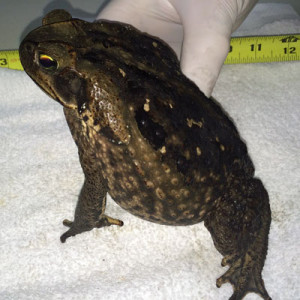Ask Gator Guru
Question: So all alligators are found in America?
Answer: Almost. The only other alligators in the world are a small species found in China’s Yangtze River valley. However, it is severely endangered with only a few dozen left in the wild. In G.G.’s opinion, poachers would receive hopefully indescribable punishment.
Question: Hi Gator Guru. I see gators while I’m on the golf course. Are they dangerous?
Answer: Alligators aren’t usually aggressive unless provoked. Crocodiles on the other hand are very aggressive.
Question: When alligators are removed from our golf course, are they released into the Everglades?
Answer: No. According to Florida Fish and Wildlife, they are taken away and destroyed.
Question: How does one tell the difference between an alligator and a crocodile?
Answer: A side-by-side comparison of the gator’s u-shaped snout can easily be distinguished from the croc’s v-shaped snout. However, lacking the side-by-side opportunity the astute golfer will know that the croc’s bottom 4th tooth is visible when its mouth is shut. The alligator’s bottom 4th tooth is not. Thus by today’s social standards, the gator is much more attractive.
Question: If alligators aren’t usually aggressive, can I show off for my golfing buddies?
Answer: That depends upon your behavior and the gator’s mood. For example, the most recent alligator related fatality in Palm Beach County was a 27-year-old man who was showing off by harassing some young gators. The mother gator, who watches out for her kids for about a year after they hatch, asserted her natural protective instincts and attacked the predator. He lost.
Question: Couldn’t he have outrun her?
Answer: Only if he was faster than a horse. Think of alligators as large lizards. They aren’t distance runners, but they can sprint faster than a horse at takeoff.
Question: Could zig-zag running help? I’ve read that’s a good idea.
Answer: I’d personally prefer to get as much distance between the alligator and me as possible. But if you like the zig-zag idea, let us know how that works out for you.
Question: But what if my golf ball is near the gator?
Answer: Even the persnickety Rules of Golf provide relief, a free drop – no closer to the hole. (Gator Guru finds your questions tedious. Let’s move on to another reader.)
Question: Hi Gator Guru. How big are alligators?
Answer: A fully grown adult male is about 13 feet long and weighs about 790 pounds.Largest on record was over 19 feet long and tipped the scales at more than 1,000 pounds.
Question: How old are alligators?
Answer: This “living fossil” has been around for 65 million years. The gator seems to be an adaptable and efficient eating machine. (Like some people I know.)
Question: I meant their life span.
Answer: Oh, that’s typically 30 to 50 years. There is one old codger in a zoo in Serbia who is 78.
Question: What do alligators eat?
Answer: Pretty much anything they want. They are carnivorous, although they will eat vegetarians. (A little G.G. humor there.) Small gators eat fish, insects and small turtles. As they grow so does their appetite which then includes birds, other reptiles, rodents and the occasional dog, cat or deer that wonders too close.
Question: How do they eat?
Answer: In one gulp. They have no ability to chew their food so they just swallow it whole. If it’s too large, they shake it (referred to as a “death roll”) until bite-sized chunks fall off. Think chicken nuggets alligator style. Any larger prey gets drowned, and then left underwater until it starts to decompose. Gators find that yummy. Now aren’t you sorry you asked?
Question: Hi Gator Guru. Are gators gregarious?
Answer: Not after they are grown. Small gators tolerate others while they are maturing, but once they are grown they become solitary and territorial. A large gator, male or female (no discrimination here), will stake out a pond and attack any gator who wants a share. Should s/he be removed, another always seems to be in line to take over the pond.
Question: Speaking of gender, how does that happen?
Answer: The female has control of that, like so many things in nature. When she builds her nest of vegetation and mud, she selects a place which will be warmer or cooler to produce the hatchling’s sex. Cooler temperatures produce females; warmer temperatures produce males. (Note that G.G. is diplomatically passing on the humor here.)
Question: Hi Gator Guru. How do alligator wrestlers avoid getting eaten?
Answer: The gator’s jaw is designed to have crushing strength while closing, but minimal strength to open. If you watch the wrestler, you’ll see he holds the gator’s jaw closed at the snout. Then he tries to keep the tail from thrashing him off. Once victory is declared, he runs away quickly. (See above comments re alligators’ speed.)
Question: Do you own an alligator belt?
Answer: Yes. It’s beautiful – made in Italy.
Photo provided by BallenIsles resident Paul Goldstein
Article written by Cy Hornsby


 The bufo toad (Bufo marinus) (also known as marine toad , giant toad, cane toad) is a huge brown to grayish-brown toad with a creamy yellow belly and deeply-pitted parotoid glands extending down the back (1). Adult giant toads generally range in size from 6 to 9 in (15 to 23 cm) but may get larger ( 1). They are replacing the native southern toad (Bufo terrestris) in the cities of southern Florida (2).
The bufo toad (Bufo marinus) (also known as marine toad , giant toad, cane toad) is a huge brown to grayish-brown toad with a creamy yellow belly and deeply-pitted parotoid glands extending down the back (1). Adult giant toads generally range in size from 6 to 9 in (15 to 23 cm) but may get larger ( 1). They are replacing the native southern toad (Bufo terrestris) in the cities of southern Florida (2).